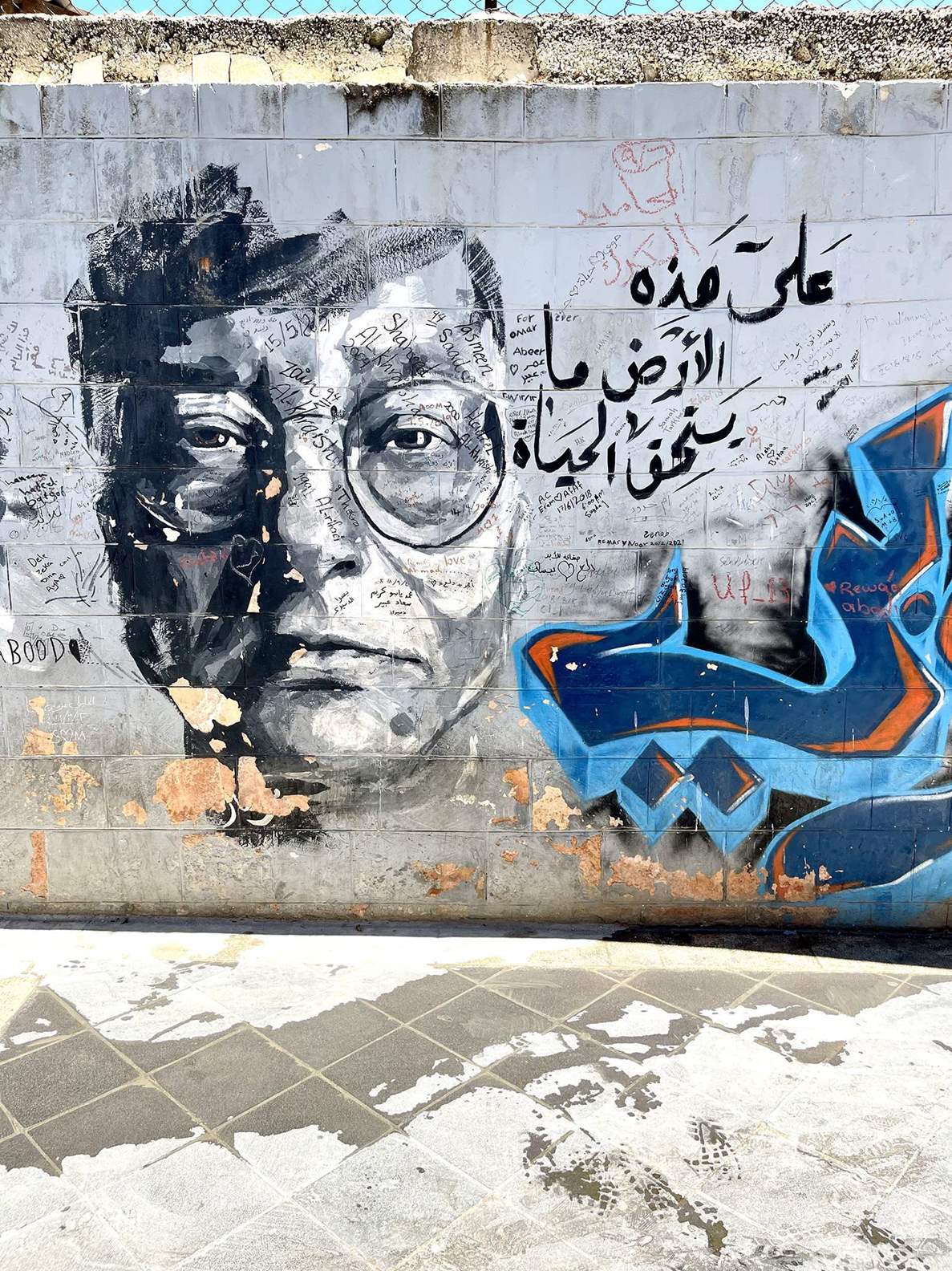AMMAN — Where Roman ruins intersect with
contemporary towers in Abdali, the underground scene is hard to miss.
As co-founder of Underground Amman, break
dancer Alaeddin Rahmeh organizes walking tours that explore the city’s
clandestine sites, which showcase its graffitied walls and
hip-hop culture.
Starting in Jabal Amman, Rahmeh leads groups through Jabal
Luweibdeh and
Al-Balad.
اضافة اعلان
 Yaraton piece on
refugee children and mental health. (Photo: Zaina Zinati/Jordan News)
Yaraton piece on
refugee children and mental health. (Photo: Zaina Zinati/Jordan News)
The capital’s buildings don hundreds of expressive
street artworks — so many that they are now legal. The murals’ enigmatic designs and anonymous
owners give Amman’s underground an overall Banksy-esque atmosphere.
One piece that particularly stands out is a mural by
Yaraton, a mental health therapist who works with refugee children. Despite its
lively colors, the mural has dark undercurrents; It shows a child with
hollowed-out eyes and ears and a missing heart. Rahmeh explains that this is
how "Yaraton" sees the displaced children; They are withdrawn and feel unseen,
unheard, and unloved.
"The artists are anonymous to the mainstream
world, but not to me, not to our small community. For example, Yaraton is
someone so amazing and well-known to me, but if you ask someone who isn't part
of this community, they wouldn’t know Yaraton, even though her paintings are
all over Amman," said Alaeddin Rahmeh in an interview with
Jordan News.
Rahmeh is a Palestinian refugee himself. He grew up in
Amman and watched the city evolve. This experience, he believes, shaped his
current perception of Amman. Many of the pieces Rahmeh addressed in the tour
are commentaries on social issues. Inspired by Jordan’s water problem, an
artist who goes by “Sardine” depicts a mermaid wearing a t-shirt with a dead
fish on it. Another piece depicts
Mahmoud Darwish, a distinguished
Palestinian poet, with the words "Ana
Araby" or "I am an Arab” written next to him.
"There are different layers. I'm a Palestinian
refugee and I am very proud to be Jordanian. There is another layer as well; I
am Arab, I am a Muslim, and my father is an imam, a sheikh, if you will. It's a
whole story," said Rahmeh.
 Mahmoud darwish “ana
araby”. (Photo: Zaina Zinati/Jordan News)
Mahmoud darwish “ana
araby”. (Photo: Zaina Zinati/Jordan News)
Art, in general, is a form of expression, and the
Amman’s art scene likes to express itself. A 600-year-old poem by the Arab
poet, Al-Mutanabbi, was reversed by an artist to express a more hopeful
message. One of the reversed lines states: "The wind will go as our ships
want," encouraging people to overcome obstacles they may face.
During the tour, Rahmeh discloses that, to many
people's surprise, around 70 percent of street artists in Amman are women. He
theorizes that this is the case because, as opposed to boys, girls are
encouraged to express themselves artistically in school.
Rahmeh organizes the tours because he wants people to
experience firsthand his love for Amman.
"In general, I want more
people to know about the street art in this city, to know there is art here, to
visit our city, to love our city. For me, everything about our capital is
beautiful. I don't want people to constantly think of trash and dirty streets
when they think of Amman because anywhere you go, there are negatives and
positives. So, we try and always push the positive first," said Rahmeh.
Read more
Trending




